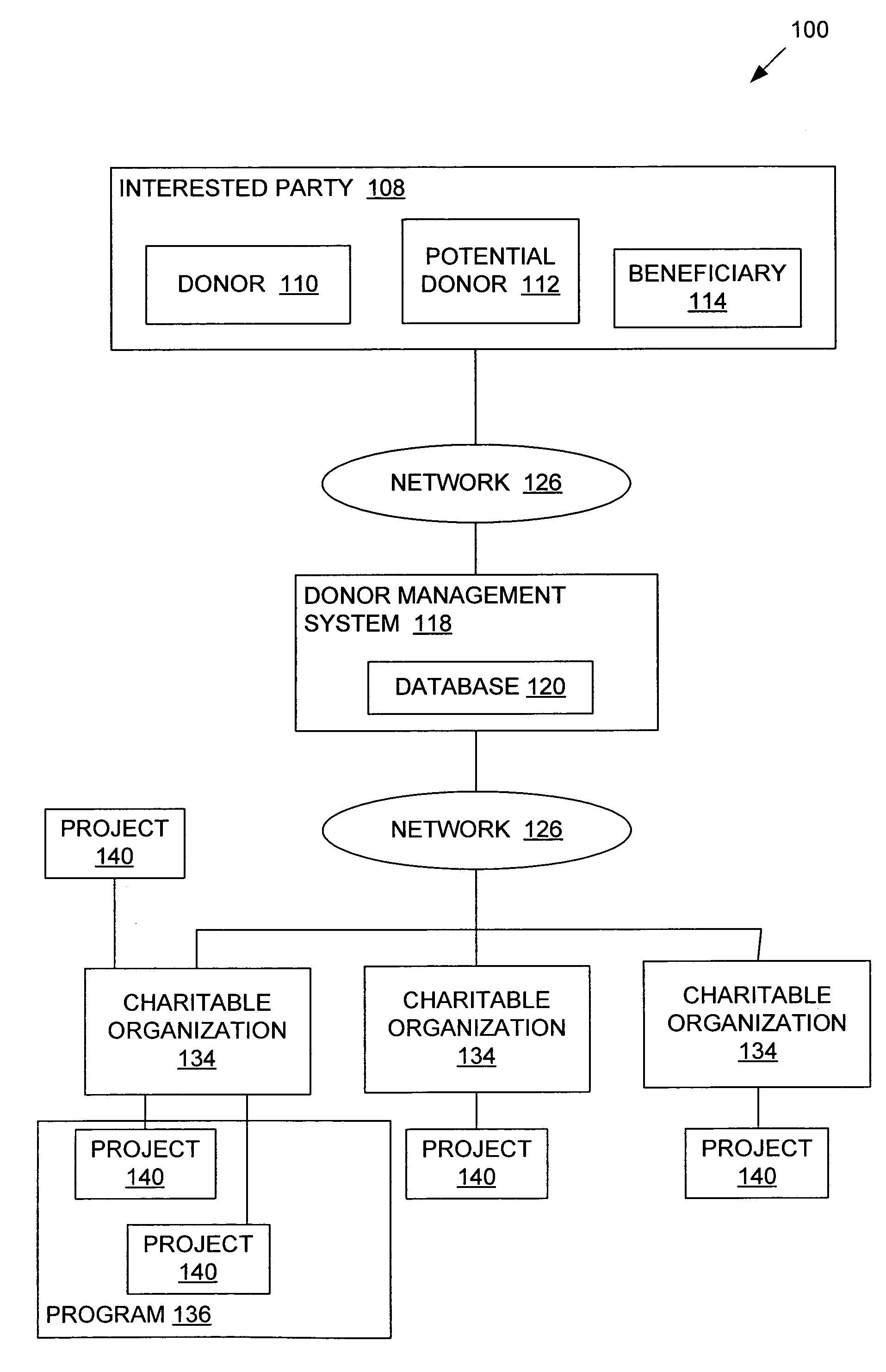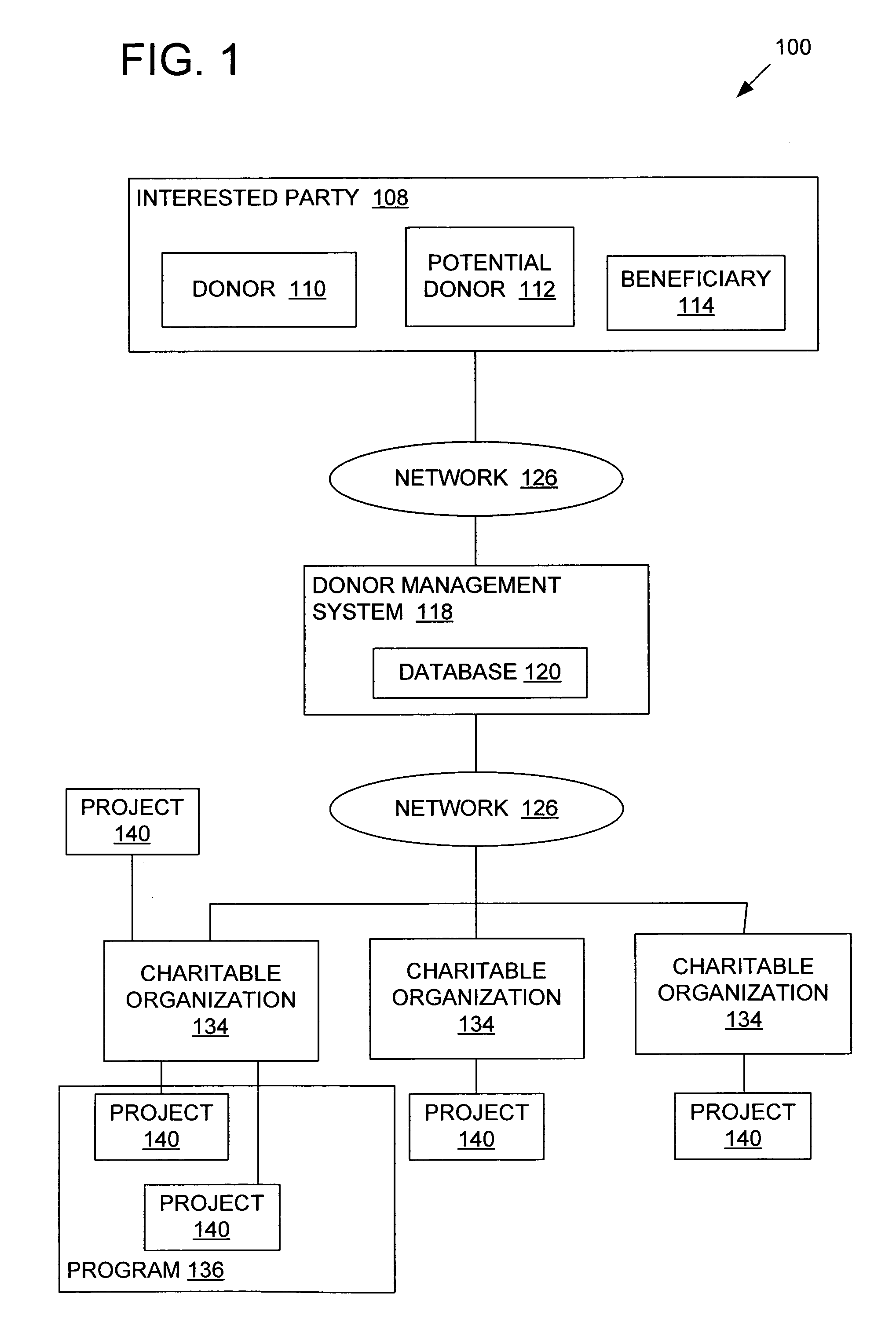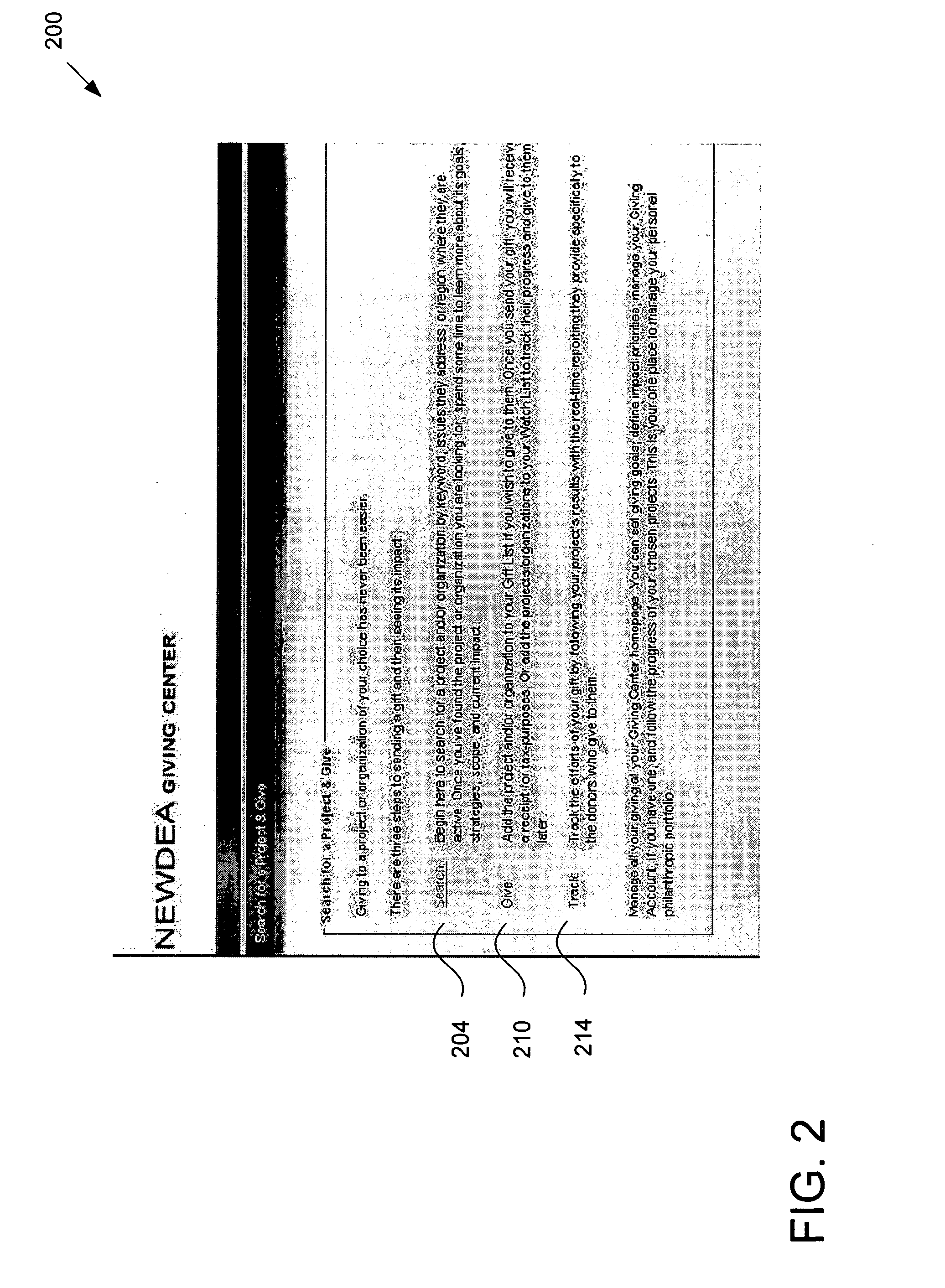Philanthropy management and metrics system
a philanthropic management and metrics technology, applied in the field of philanthropic management and metrics system, can solve the problems of substantial expense to philanthropic foundations, difficult, time-consuming, labor-intensive, etc., and achieve the effect of reducing the cost of capital investmen
- Summary
- Abstract
- Description
- Claims
- Application Information
AI Technical Summary
Benefits of technology
Problems solved by technology
Method used
Image
Examples
Embodiment Construction
[0088] In certain embodiments, the present disclosure provides methods and systems for allowing a plurality of donors to view information regarding a plurality of charitable organizations and to make a donation such charitable organizations. Donors may be, without limitation, individuals, businesses, philanthropic organizations, or wealth managers. Charitable organization, as used herein, includes, without limitation, nonprofit organizations, public charities, private foundations, private operating foundations, religious organizations, secular charities, aid organizations, health organizations, environmental groups, educational institutions, and other philanthropic organizations.
1. Donor Management System
[0089] With reference to FIG. 1, a donor management system 118 allows a plurality of interested parties 108 and a plurality of charitable organizations 134 to interact using the donor management system 118. The interested party 108 may comprise one or more donors 110, potential do...
PUM
 Login to View More
Login to View More Abstract
Description
Claims
Application Information
 Login to View More
Login to View More - R&D
- Intellectual Property
- Life Sciences
- Materials
- Tech Scout
- Unparalleled Data Quality
- Higher Quality Content
- 60% Fewer Hallucinations
Browse by: Latest US Patents, China's latest patents, Technical Efficacy Thesaurus, Application Domain, Technology Topic, Popular Technical Reports.
© 2025 PatSnap. All rights reserved.Legal|Privacy policy|Modern Slavery Act Transparency Statement|Sitemap|About US| Contact US: help@patsnap.com



